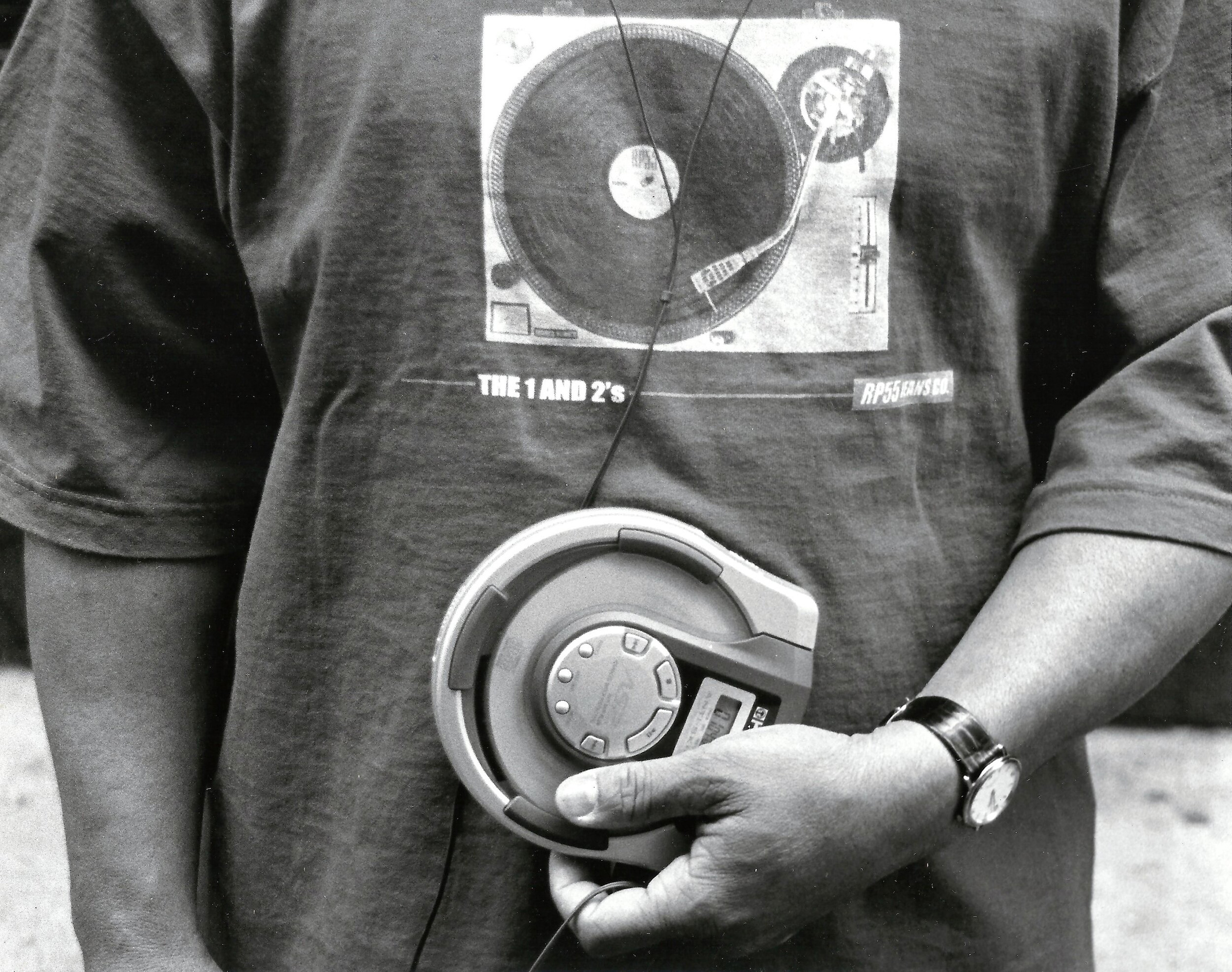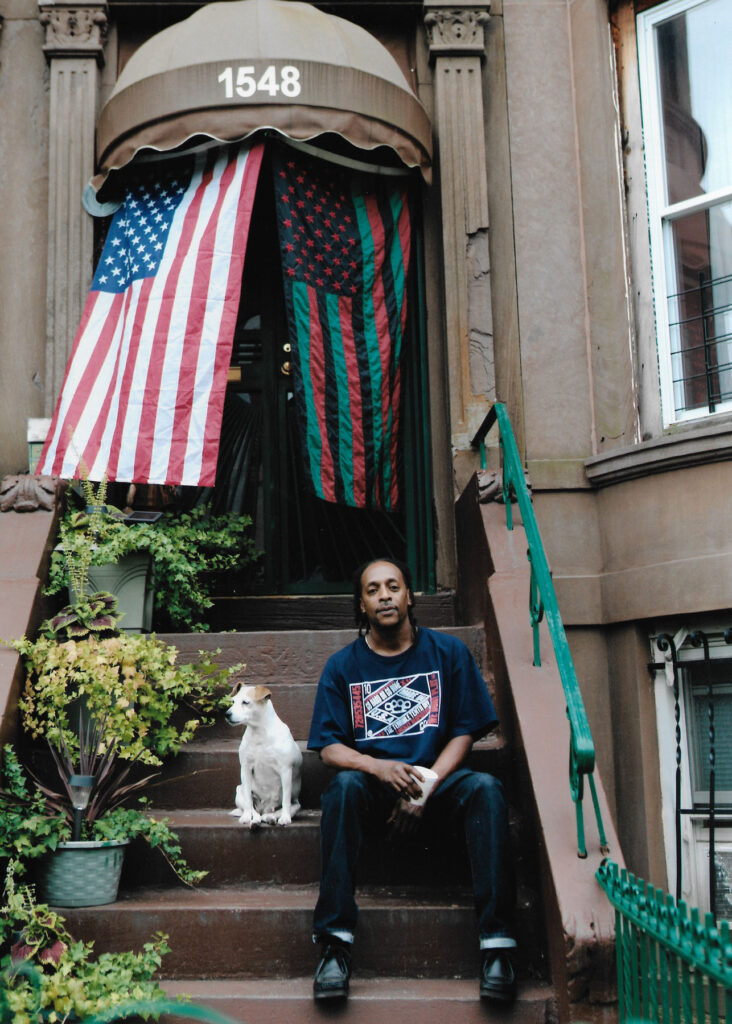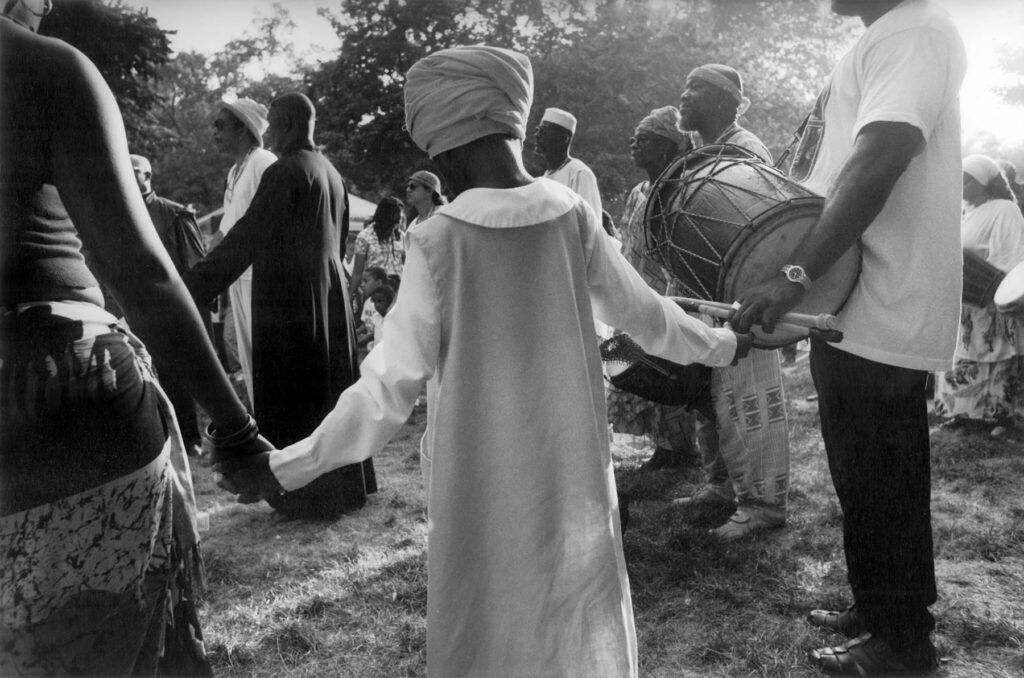Jamel Shabazz

“The creative eye is more important than the camera”
The acclaimed street photographer, Jamel Shabazz, first picked up a camera as a teenager at school in Red Hook, Brooklyn, in the mid-1970s, set upon making images of his friends and classmates. Shabazz was no stranger to the medium; his father was a professional photographer whose collection of photobooks were made available to his son. Black in White America (1968) by the photojournalist Leonard Freed, was one such book that had a profound impact on the young Shabazz.
After a stint in Germany with the US Army in his late teens, he returned to find the New York he left behind in a very different state of mind. Racial tensions and violence were on the rise, and crack cocaine was just beginning to seep into the foundations of daily life. In that moment, the impression that had been made on Shabazz by photographers, like Freed and Gordon Parks, became clear, as he turned his camera onto the people that he’d grown up around in Brooklyn and New York. By making images of the people that weren’t usually photographed, Shabazz sought to heal growing divisions – countering animosity by taking the time to talk to the people he stopped with his camera; giving them the chance to express, and be, themselves. Shabazz refers to himself as a conscious photographer, using his practice to enrich and improve the lives of those around him. And as he explains over email, this has made him acutely aware of his ‘personal responsibility as an image-maker, [creating] images that shed light [on the communities he documented], while combatting the negative stereotypes that were often being presented in the media.’
There remains a critical importance to the images Shabazz made from the 1970s through to the 1980s, of a city, and its communities, lost to racist policy-making and rampant gentrification; in 2020, it’s not difficult to make the case for why. But for all the social injustice that underpins Shabazz’s work, there’s something else of equal importance that the photographer has long been commended for. A casual glance at the photographer’s work and it becomes clear that the subjects he turns his camera on have one thing in common: style. In that moment that the photographer clicks the shutter, his subject become all that matters in the world, regardless of what’s going on behind the scenes. ‘Time and motion is frozen,’ Shabazz notes; and the poses, the gestures and the dress of the people he captures become take centre stage. As he explains of the editing process, Shabazz looks for ‘images that speak to the soul, inspire joy, or simply provoke thought and reflection.’

You refer to your work as being the positive medicine to counterbalance negative stereotypes of the Black community; how do you feel that you have been able to achieve this?
There has been much grief and anger since the start of the Covid-19 crisis, as well as the endless incidents of racial injustice and police misconduct. My daily postings on my various social media feeds have provided me with a great space to share images that bring joy and reflection to the viewer. I receive numerous responses on a daily basis to these posts, from people around the globe, writing to tell me that it brings them joy and hope when my images appear on their feeds. It is in that process that,
“I feel that I am able to counter negative stereotypes, while also providing a form of visual medicine and relief from the daily stress of life in 2020.”
How did becoming a street photographer change your relationship with the cityscapes of New York?
During my stint in the military overseas in Europe in the late 1970s for three years, I read Claude Brown’s book ‘Manchild in the Promised Land’. His depictions of, and personal experience navigating through, New York, intrigued me and informed my interest in exploring the vast landscape of my city. As a result, I was inspired to come home and venture out into the city to document what I saw, and that is exactly what I did upon my return, in 1980. During the first half of that year, I travelled throughout the five boroughs, seeing first-hand the beauty and diversity of one of the greatest cities in the world, all while documenting it with my camera.
In 2018, you received the Gordon Parks Foundation Award. How did it feel to be recognized as continuing his legacy? Did that recognition change how you perceive your work?
Receiving the Gordon Parks Foundation Award for documentary photography was one of the highlights of my career. The accolade served as an indicator that the work I have been doing for so many years had been recognized. For me, the award was a symbolic being passed on to continue to work in the spirit of Gordon Parks; to use my camera as a weapon to fight against injustice and the misrepresentation of images that harm communities of colour along with those who are struggling around the world.
The camera is your weapon of choice, but what determines the type of camera you use?
At this stage of my life, any camera that has the ability to record an image is fine with me. I generally carry a basic Fuji X100 with a fixed lens and my iPhone. The creative eye is more important than the camera.
In an interview from last year for Afropunk, you mentioned your aspirations about being a curator; what does this role involve for you and how do you intend to realise this?
“During my travels, I have met countless aspiring photographers who have created amazing imagery, but never had an opportunity to showcase their work in an art gallery.”
Having had my own work in a gallery, I felt it was my responsibility to aid those photographers I’d met, to help them gain traction. In 2008, I got such an opportunity, when Danny Simmons asked me to curate a group show in his space at Corridor Gallery in Brooklyn, New York. I was honoured by the invitation, and gathered around 20 photographers for a show that was called ‘Positivity’ – the theme being centred on positive imagery and how artists can come together using the global language of art to make a difference in the world. The exhibition was a success and helped set the stage for the next generation of image makers. Just last year, I was granted another opportunity to curate an exhibition – this time at Photoville in Brooklyn. I reached out to my good friend and comrade Laylah Amatullah, who served as co-curator, and we produced an exhibition entitled ‘Perspectives’. That show consisted of 12 gifted documentary photographers from diverse communities, all with important work and voices. The images that were selected dealt with issues ranging from Albinism to various protests. The objective of the exhibition, like the previous one I curated, was to bring new visions onto the scene whilst also addressing pressing social issues. Presently, I am working with a curator in London to bring the concept there, with the inclusion of 12 European artists that share similar concerns.

Do you look at your photography through the context of the present day or through the eyes you took it at the time?
Considering the challenging times we are living in, where life as we once knew it has changed, I find myself revisiting a lot of my earlier images and reflecting on a time period when life was very different. For me, there was a time before both the crack and AIDs epidemics and then the war on drugs, which opened up the flood gates to mass incarceration. As a witness who documented the early 1980s I saw a lot of hope and promise.
Your work is inherently social; how has the coronavirus pandemic affected your ability to take photographs and connect with people on the street?
When the Coronavirus hit this country, I had to re-evaluate my whole approach to the craft. Even just having to contend with wearing a mask has had some challenges, and the mandatory requirement for everyone to wear one has led me to fall back and redirect my energy towards revisiting my older work. For the past few months, I have been scanning thousands of negatives from the 1980s and 1990s, reliving moments that are long gone. That whole experience has rekindled a flame inside and brought me great joy. However, I do miss connecting with ordinary people on the streets, but today I am embracing Zoom and using that as a platform to bridge the gap and maintain some degree of normalcy during these uncertain times.
Your photographs capture people’s legacies within an image, especially those who often go without recognition or acknowledgment in society, and especially within the context of New York during the crack and AIDs epidemics. In light of the coronavirus pandemic which has disproportionately affected poorer, unprivileged communities, and also as the BLM resurgence has provoked us to recall the names of those whose lives have been taken, how do we, going forward, meaningfully capture the legacies of those who are no longer with us?
The struggle continues and we need all hands on deck like never before to be proactive in the fight for freedom, justice and equality. I am greatly concerned with, not only the future of this country, but the world itself, in these very troubling times we are living in. I also feel that the larger global artist communities must raise their voices, along with their level of creativity in order to address the ever-growing problems that are facing the world.
Photos
- A time before change
- Black in White America
- The Gatherings